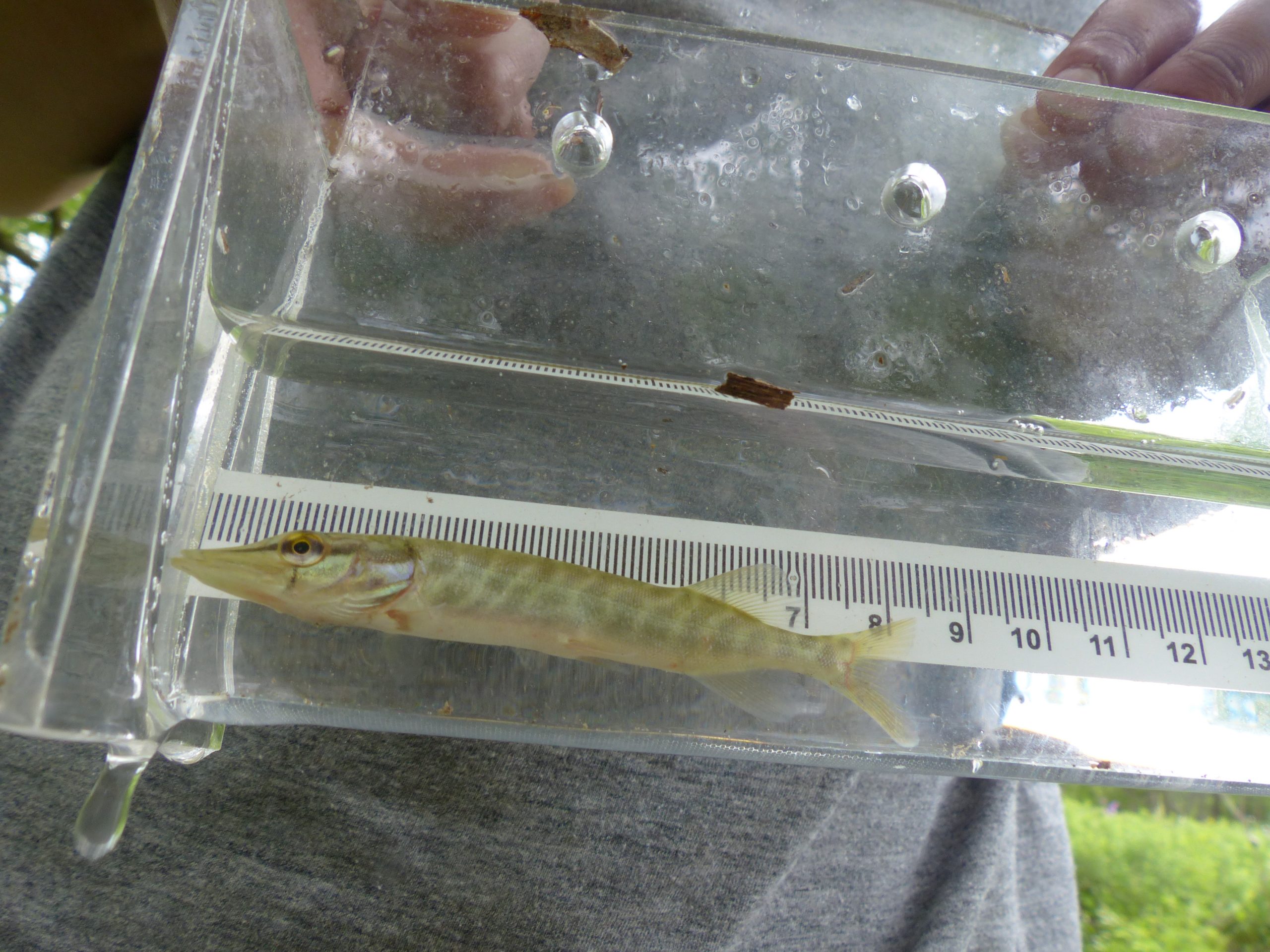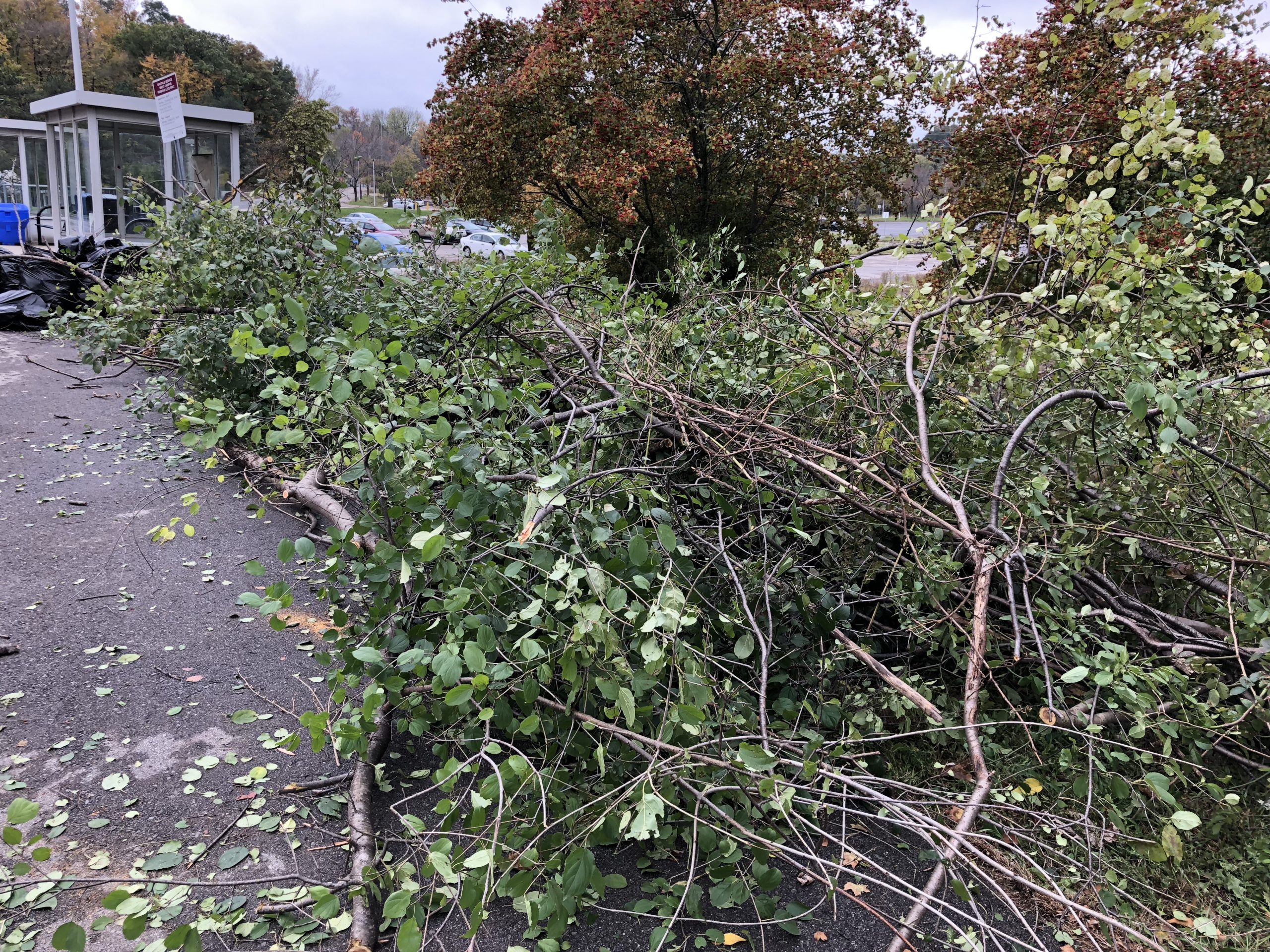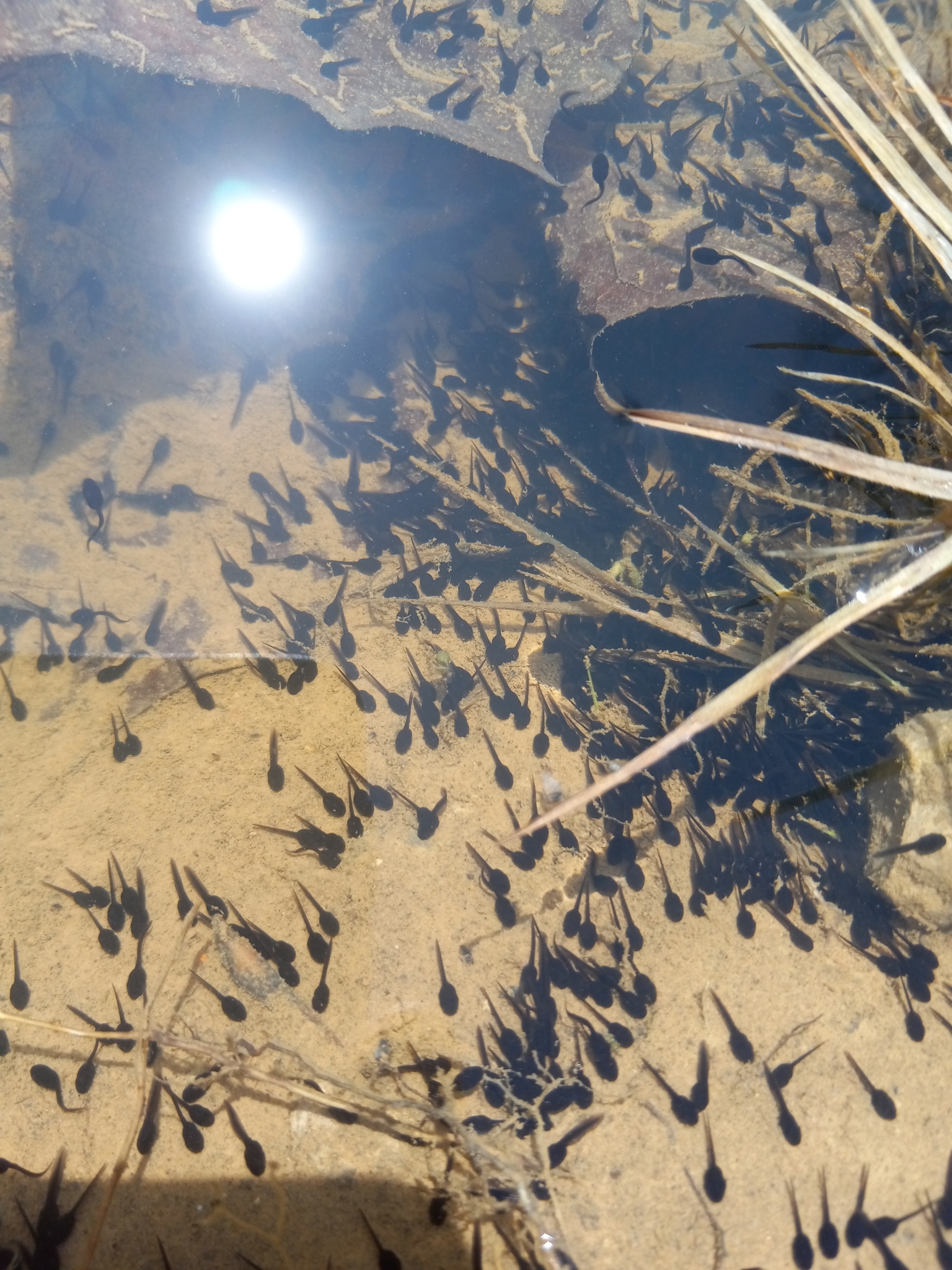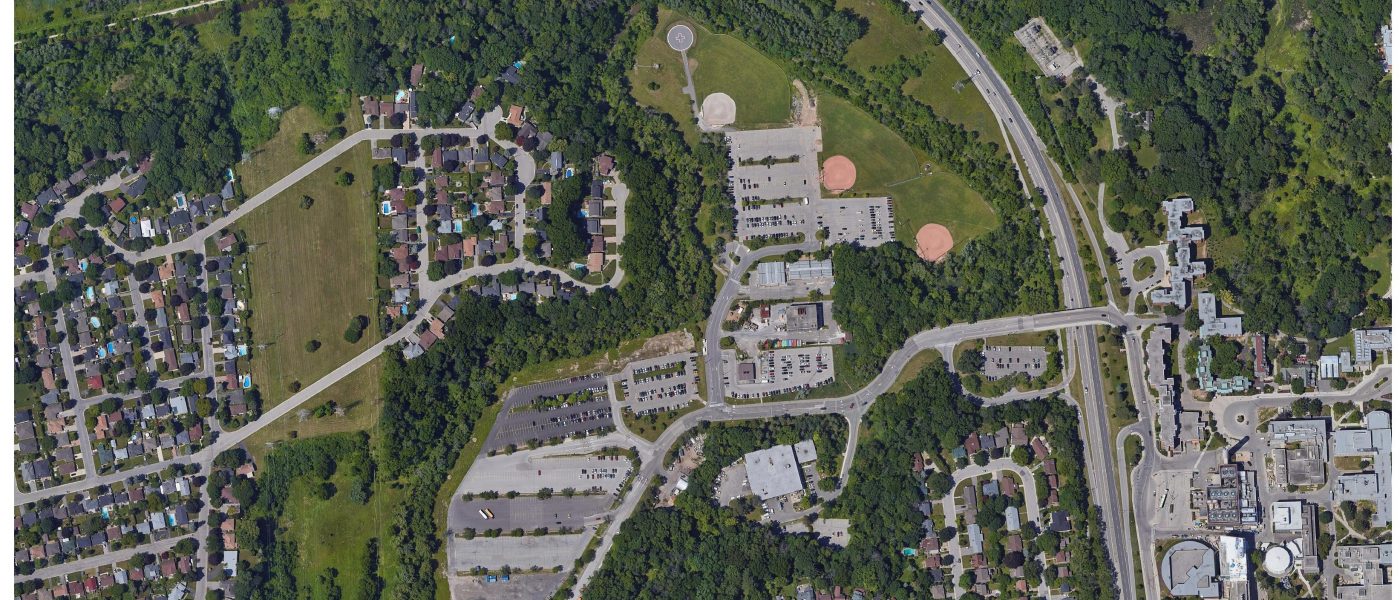Information Box Group

Lot M Riparian Buffer
In the spring of 2014 the riparian buffer between Ancaster/Coldwater Creek and McMaster’s Parking Lot M was expanded from 10 metres to 30 metres. This was done to increase wildlife habitat, protect the creek from parking lot pollutants, and increase overall creek health. This involved the removal of approximately 300 parking spaces and extensive site remediation and native plantings. This project was championed by Dr. Susan Dudley, Dr. Jim Quinn, and other members of the President’s Advisory Committee on Natural Lands, with inspiration and support from community group Restore Cootes.
Photo by Randy Kay

Ancaster Creek Biomonitoring Project
A collaboration between Dr. Jim Quinn, Dr. Susan Dudley, Dr. Jurek Kolasa, Dr. Joanna Wilson, and Mr. Marvin Gunderman in the Department of Biology to monitor the ecology and health of Ancaster/Coldwater Creek. This project was conducted in the summer of 2015 and 2016 and involved collecting data on water quality, flora and fauna in and along the creek, as well as disturbances and pressures on the lower portion of Ancaster/Coldwater Creek between Lower Lions Club Road and Spencer Creek.
Photo: Northern Pike (Esox lucius) juvenile, by Noah Stegman

Turtle Nesting Mounds
In the fall of 2014 four turtle nesting mounds were created in the newly formed Parking Lot M riparian buffer. In the spring of 2016 one additional turtle nesting mound was added. These mounds are made out of sand and gravel and provide ideal habitat to nesting turtles in the area. The mounds are actively maintained by students and staff in the Department of Biology.

Invasive Species Management
Nature at McMaster and a variety of on and off campus partners have been involved in active remediation of west campus. Invasive species such as European Buckthorn (Rhamnus cathartica), European Reed (Phragmites australis australis), Honeysuckles (Lonicera sp.), Multiflora Rose (Rosa multiflora), Dog Strangling Vine (Vincetoxicum sp.), and a variety of other invasives have been actively removed through primarily mechanical means. Student volunteers have been the primary workforce for these efforts.
Photo: Invasive European Buckthorn (Rhamnus cathartica) removed during McMaster’s Sustainability Day 2018

Watershed Trust Learn More
Watershed Trust: a redesign of McMaster’s West Campus is an initiative committed to advancing McMaster University’s priorities. It will contribute to human and societal health and well-being, promote and practice environmental sustainability, address Truth and Reconciliation, facilitate meaningful community engagement and advance research and teaching innovation and excellence while providing opportunities for experiential and interdisciplinary study.
Photo by Carmela Laganse

Cootes Drive Meadow
In 2017 members of the President’s Advisory Committee of Natural Lands worked with Facility Services Grounds Department to modify the mowing practices of the green space between Cootes Drive and Parking Lot P/Baseball Diamonds. Mowing was ended to allow for a meadow to grow, providing habitat for native species of birds, insects, and mammals.
Additional work on the Cootes Drive Meadow has included the removal of invasive species like Common Buckthorn, Honeysuckle, and European Black Alder, as well as native species plantings to restore a healthy native understory.

Cootes Drive Ponds
In November 2023, five ponding features were excavated in the wet meadow along Cootes Drive. Over the course of 2024, numerous native wetland plant species were planted around these ponds to promote biodiversity and restore healthy habitat for plants, insects, amphibians, and many other species. These ponds provide breeding habitat for many native frog species.

